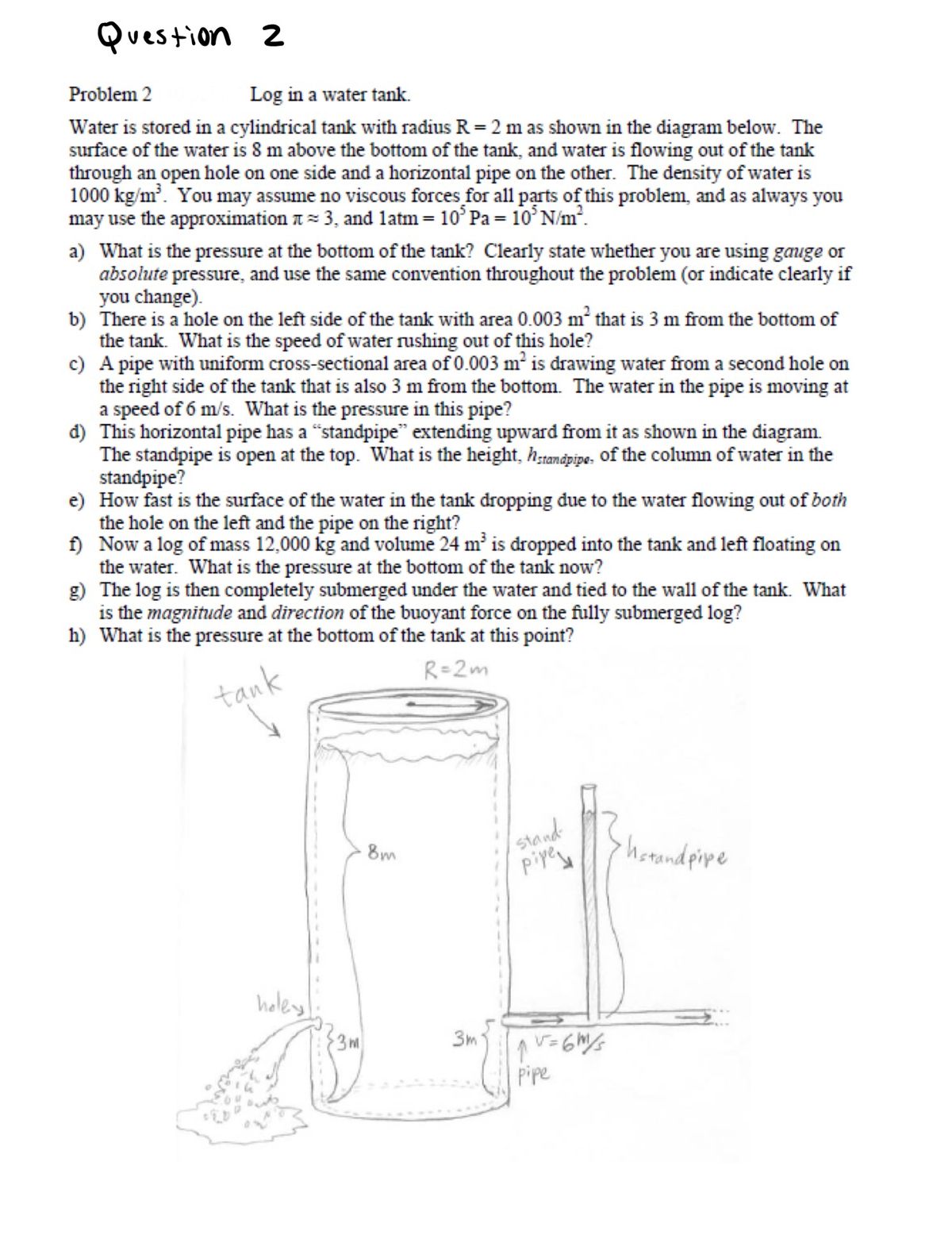2

Extracted text: Question 2 Problem 2 Log in a water tank. Water is stored in a cylindrical tank with radius R = 2 m as shown in the diagram below. The surface of the water is 8 m above the bottom of the tank, and water is flowing out of the tank through an open hole on one side and a horizontal pipe on the other. The density of water is 1000 kg/m. You may assume no viscous forces for all parts of this problem, and as always you may use the approximation t = 3, and latm= 10° Pa = 10° N/m². a) What is the pressure at the bottom of the tank? Clearly state whether you are using gauge or absolute pressure, and use the same convention throughout the problem (or indicate clearly if you change). b) There is a hole on the left side of the tank with area 0.003 m² that is 3 m from the bottom of the tank. What is the speed of water rushing out of this hole? c) A pipe with uniform cross-sectional area of 0.003 m is drawing water from a second hole on the right side of the tank that is also 3 m from the bottom. The water in the pipe is moving at a speed of 6 m/s. What is the pressure in this pipe? đ) This horizontal pipe has a “standpipe" extending upward from it as shown in the diagram. The standpipe is open at the top. What is the height, h;tandpipe. Of the column of water in the standpipe? e) How fast is the surface of the water in the tank dropping due to the water flowing out of both the hole on the left and the pipe on the right? f) Now a log of mass 12,000 kg and volume 24 m is dropped into the tank and left floating on the water. What is the pressure at the bottom of the tank now? g) The log is then completely submerged under the water and tied to the wall of the tank. What is the magnitude and direction of the buoyant force on the fully submerged log? h) What is the pressure at the bottom of the tank at this point? R=2m tạnk stand piyese 8m hotandpipe heley 3m 3m Pipe